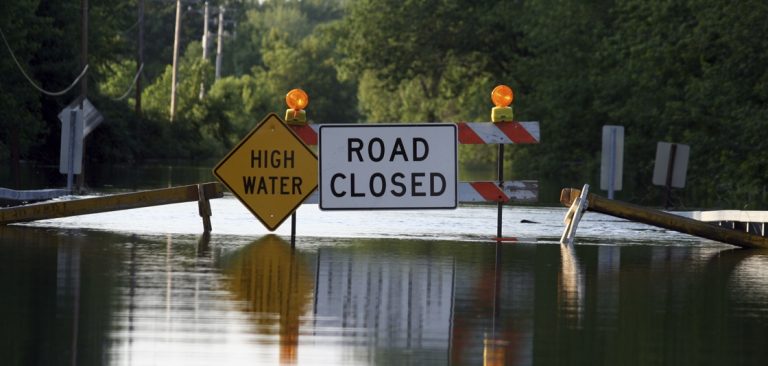The Coastal Resilience Center of Excellence (CRC) has joined a regional government partnership to aid the disaster recovery process in the Southeastern United States.
 The Southeast Disaster Recovery Partnership, which is run by the Southeast Coastal Ocean Observing Regional Association (SECOORA), was formed as the result of a National Oceanic and Atmospheric Administration grant to strengthen resilience and recovery in coastal communities. The CRC is an advisory committee partner in the effort, which includes groups from emergency management, economics and coastal hazards.
The Southeast Disaster Recovery Partnership, which is run by the Southeast Coastal Ocean Observing Regional Association (SECOORA), was formed as the result of a National Oceanic and Atmospheric Administration grant to strengthen resilience and recovery in coastal communities. The CRC is an advisory committee partner in the effort, which includes groups from emergency management, economics and coastal hazards.
Amanda Martin, a University of North Carolina at Chapel Hill (UNC) PhD student in the Department of City and Regional Planning, leads one aspect of the project. Martin is the Resilience Project Manager for the Partnership, and is conducting research on the role of public-private sector partnerships and engagement in recovery planning.
“With this research, we will prepare recommendations for businesses, economic developers, local government and others to plan for business and economic recovery,” Martin said.
Dr. Gavin Smith, Director of the CRC, said he is excited to be involved in the partnership.
“We recognize and applaud the Southeast Disaster Recovery Partnership’s efforts to better understand how to rebuild communities impacted by coastal storms in a way that makes them more economically resilient,” Dr. Smith said. “Our understanding and transfer of this information to communities needs to be improved and this project strives to do that.”
According to SECOORA, the Southeast coastal region – which includes North Carolina, South Carolina, Georgia and Florida – is particularly vulnerable to coastal hazards such as hurricanes and floods. The importance of this region was recently highlighted by the impacts of Hurricane Matthew, which followed a path directly up these states’ shorelines. The Partnership aims to help these regions build the resilience of both environments and economies.
“Hurricane Matthew has certainly made the work of this partnership even more relevant, as some parts of our region will be recovering for an extended period of time,” said Kristine Cherry, the Partnership’s Coordinator. “The planned projects were just getting underway when hurricanes Hermine and Matthew impacted the Southeast, so our immediate next steps will be to learn as much as possible from the recovery processes from these storms and then assess how our partnership can continue to best support the states and local communities.”
The cost of natural disasters in the United States has doubled in the last two decades, according to SECOORA. Hurricane Sandy alone caused $50 billion in damage in 2012. Recovery plans support more effective use of post-disaster funding and help communities get back on their feet quickly – reducing the cost of an extended, expensive rebuilding process.
In the Southeast region covered by this project, more than 17 million people live in counties adjacent to the coast.

Challenges for the project include helping coastal hazard-affected communities rebuild their business, and to help maintain lines of communication between businesses, governments and NGOs.
The project has three goals:
- Support states by enhancing the ability of coastal communities to prepare strong recovery plans. This includes investing in projects that advance recovery planning efforts in each state; preparing and sharing customized training and tools; and implementing the National Disaster Recovery Framework (a product of FEMA) at the local level.
- Build the capacity of businesses to engage in recovery planning and build awareness of recovery resources. This will be done by establishing a Resilient Business Network of private sector partners, assessing their challenges and designing programs to support them. The Network is a peer-to-peer community in the private sector with interests in improving community and economic resilience through recovery planning.
- Build regional capacity for recovery planning to collaborate across the region, learning from best practices honed through state and local experiences.
To meet these goals, the partnership plans to provide a forum for “multi-sector information exchange, training and communication,” Cherry said.
“Our effort is designed to build upon the current activities in the states and private sector to better leverage existing knowledge and resources and identify new opportunities to strengthen and support their priorities,” Cherry said.
Martin said the benefits of this partnership would be seen over time as states prepare for future events like Hurricane Matthew.
“We’ll know it has been successful if we see communities, organizations and agencies discussing and engaging in disaster recovery planning in new or more meaningful ways,” Martin said. “The real payoff will be the value of that planning when the next coastal disaster hits.”
To learn more, visit http://secoora.org/sdrp.
